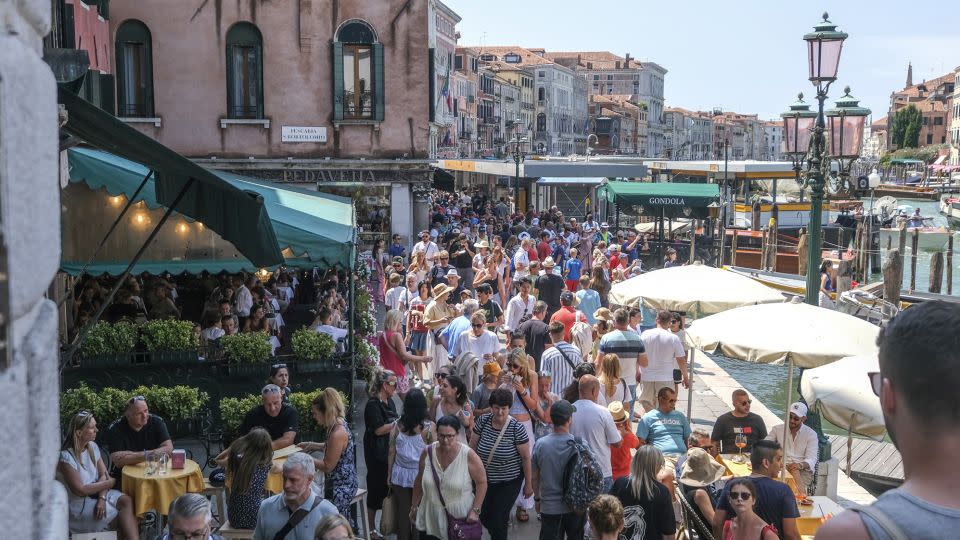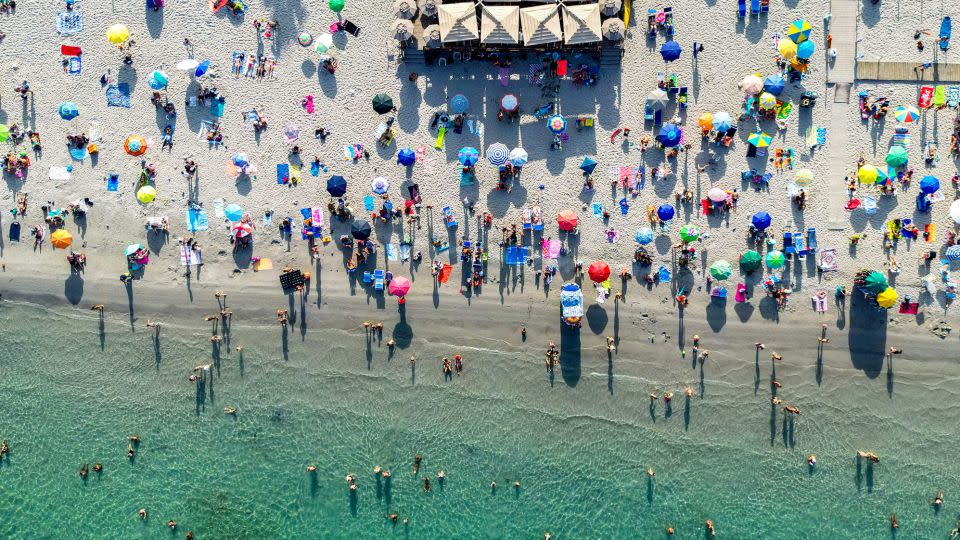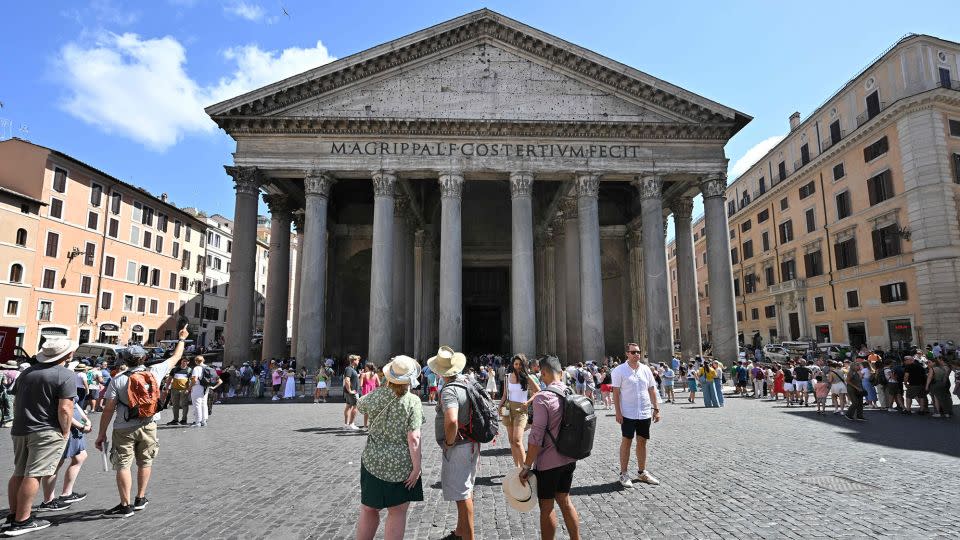$2 to cut a sandwich in half: The outrageous rip-offs targeting tourists in Italy
An Italian holiday may be a priceless experience for those who have enjoyed all this country has to offer. But the summer of 2023 will go down as one of the priciest in history after a slew of price gouging scandals at cafes and restaurants that have affected foreign tourists and Italians alike.
Take the couple charged 2 euros ($2.20) to cut their ham sandwich in half on the shores of Lake Como, or the young mother in the Roman seaside town of Ostia charged 2 euros to have her baby’s bottle heated in the microwave.
A pair of tourists were charged 60 euros ($65) for two coffees and two small bottles of water at the Cervo Hotel in Sardinia, although the owner told CNN the prices were plainly listed and the charge is mostly for the view over the expensive yachts of the nearby port.
Tourists were also charged 2 euros for an extra – empty! – plate near Portofino in northern Italy, and 10 cents for a sprinkle of cocoa on a cappuccino at a Lake Como coffee bar. Italian cafes rarely use cocoa on cappuccinos, hence why they justified the charge.
These cases, dubbed “crazy receipts” by local media, have been documented by the consumer protection group Consumerism No Profit, which reports a staggering 130% increase in prices in tourist areas in Italy this summer.
Easy targets

It’s not just restaurateurs driving prices. High fuel and energy prices have made it an incredibly expensive summer.
The prices have become so out of control—some 240% higher than other Mediterranean destinations —that many Italians are abandoning their usual local haunts for their August vacations, instead opting for coastal countries like Albania and Montenegro, which don’t quite offer the same Italian charm or cuisine, but are affordable.
Even Italian prime minister Giorgia Meloni took a short beach vacation in Albania this year, her office confirmed.
The group Confcommercio predicts that only 14 million Italians will take their vacation at home around the traditional Ferragosto or August 15 break, around 30% down from pre-Covid figures.
“The very strong price increases in the air transport, accommodation and holiday package sectors has profoundly changed the holiday habits of Italians,” said Furio Truzzi of consumer watchdog group Assoutenti.
Truzzi added that the prices won’t stop Italians from vacationing, but it will affect how long they stay.
“And the paradox is that despite the reduction in holiday days, spending will be higher: the 2023 summer holidays will cost Italians 1.2 billion euros more than in 2022, albeit with fewer nights away from home,” he said.
Foreign tourists have more than made up for the decline, with Italy’s tourism ministry predicting that 68 million tourists will visit Italy over the summer, more than three million more than pre-pandemic figures, making them the easiest target for price gouging.
Americans and Asian tourists have come in droves this year, Italy’s tourism ministry says, replacing the higher spending Russian tourists who tended to spend more and stay longer, but who are absent this year because of the war in Ukraine.
Worst offenders

One of the worst offenders are beachfront establishments which rent sunbeds and umbrellas.
In Puglia, daily rental for two sunbeds and one umbrella during the week averages 50 euros, and nearly double on the weekend, but further north, the price to sit in the front row on a crowded beach can be triple that, starting at around 150 euros ($163) a day during the week, especially in the more exclusive areas like Portofino—that is if the front row umbrellas aren’t already reserved by locals.
“Sharm el Sheik [in Egypt] costs less, which is why so many Italians are going abroad,” Paolo Manca of the Federalberghi (Hotel Federation) says, explaining that to get to traditional Italian vacation spot like the island of Sardinia, a family can pay thousands a day, starting with an expensive ferry or airfare, inflated hotel prices and expensive meals.
When asked what they paid for two Aperol Spritzes at a café in Piazza Navona in central Rome, Americans Betsy and James Cramer said they were embarrassed to admit how much they paid. But they knew they would pay more to sit at a popular location.
“We’ve overpaid for gelato, for spritzes and for our hotel, but we knew it going in,” Betsy told CNN. “We had this trip planned before Covid and have been dreaming about it even though we read the headlines about expensive prices.
“You just have to read the menu and ask if there are extra charges. And if there are, then you have to either walk away or just eat it.”
‘Year zero’

While high prices may be impacting the average tourist, luxury tourism has risen this year, according to Italy’s tourism ministry, which says a record-breaking 11.7 million travelers will stay in five-star hotels in Italy this summer, according to reservation records.
“In August, high-end tourism continues to grow, unlike normal tourism,” Antonio Coviello, a researcher with Italy’s National Research Center wrote in a report on luxury travel issued this week, adding that the risk of over-tourism in the luxury sector is a concern because it could drive up prices in the mid-range travel sector to accommodate the bigger spenders.
Italy’s tourism minister, Daniela Santanche, said that despite a season marked with bad headlines about price gouging and fewer Italians traveling, the summer has been a defining moment in Italy’s post-pandemic recovery.
“I would not speak of a failure, but neither of a success,” she said this week. “I would say that we can finally start discussing tourism again and plan our next moves. In fact, this is the first year without pandemic restrictions, and therefore, in a certain sense, we can speak of 2023 as ‘year zero’.”
For more CNN news and newsletters create an account at CNN.com

